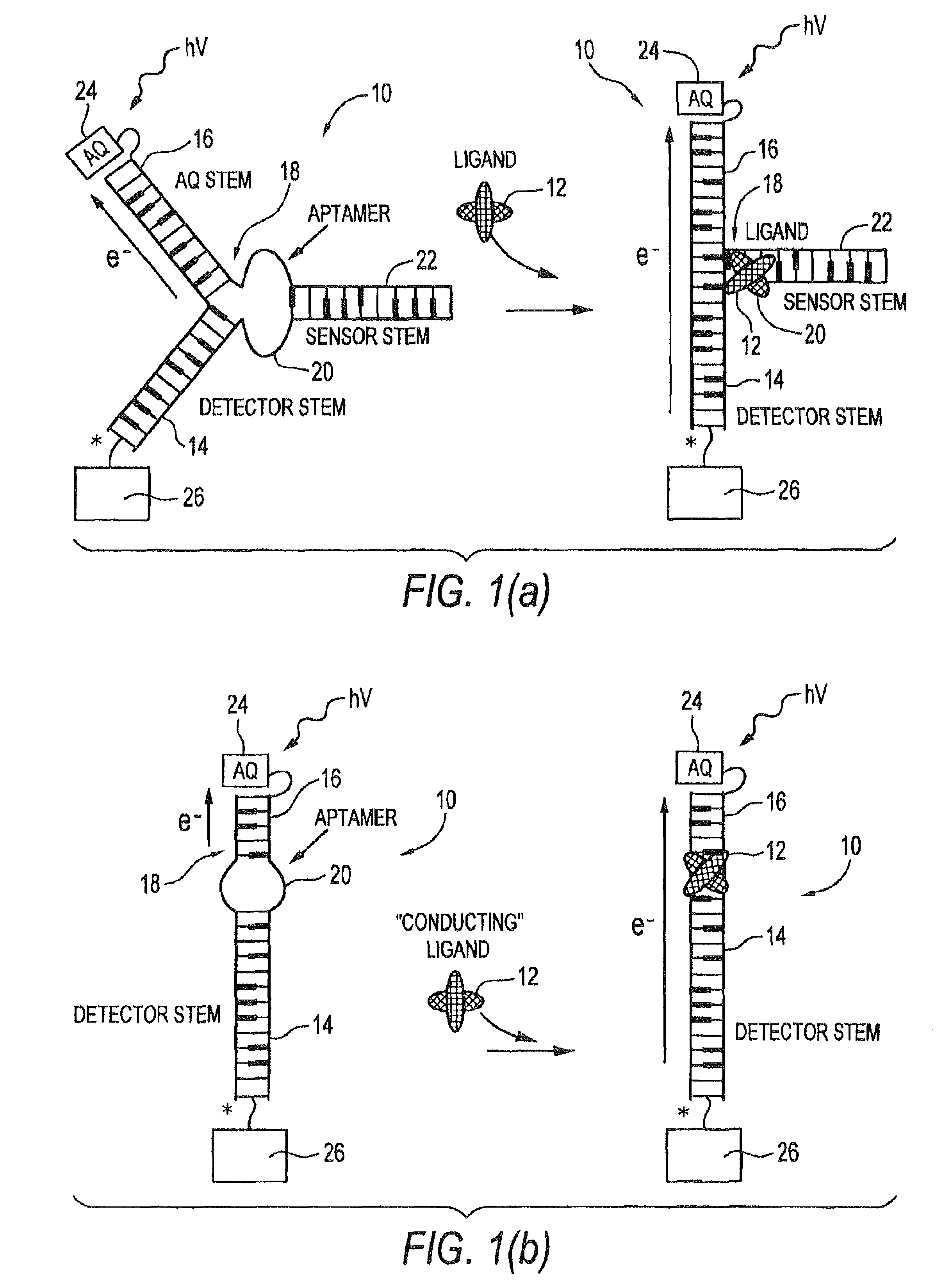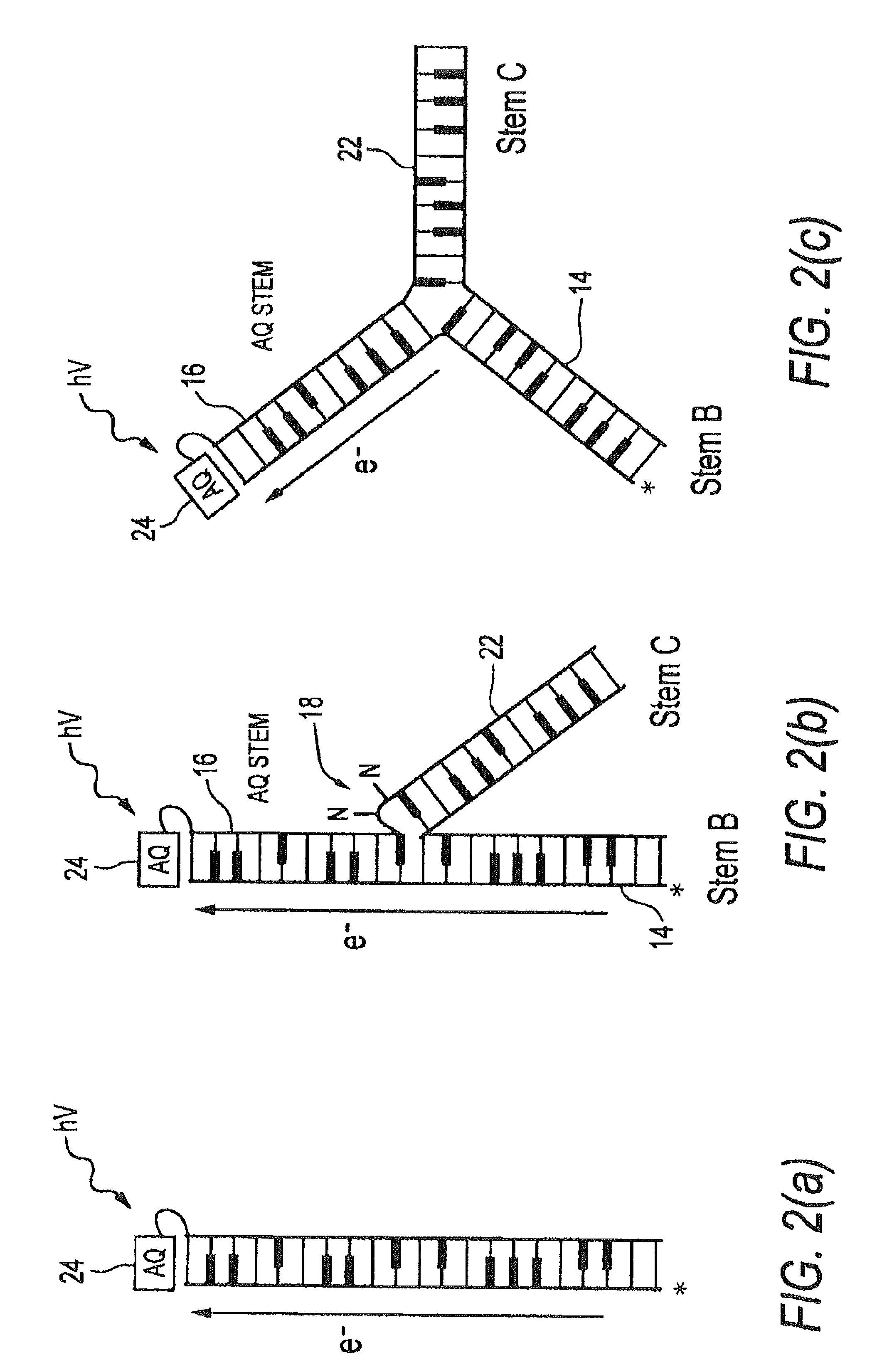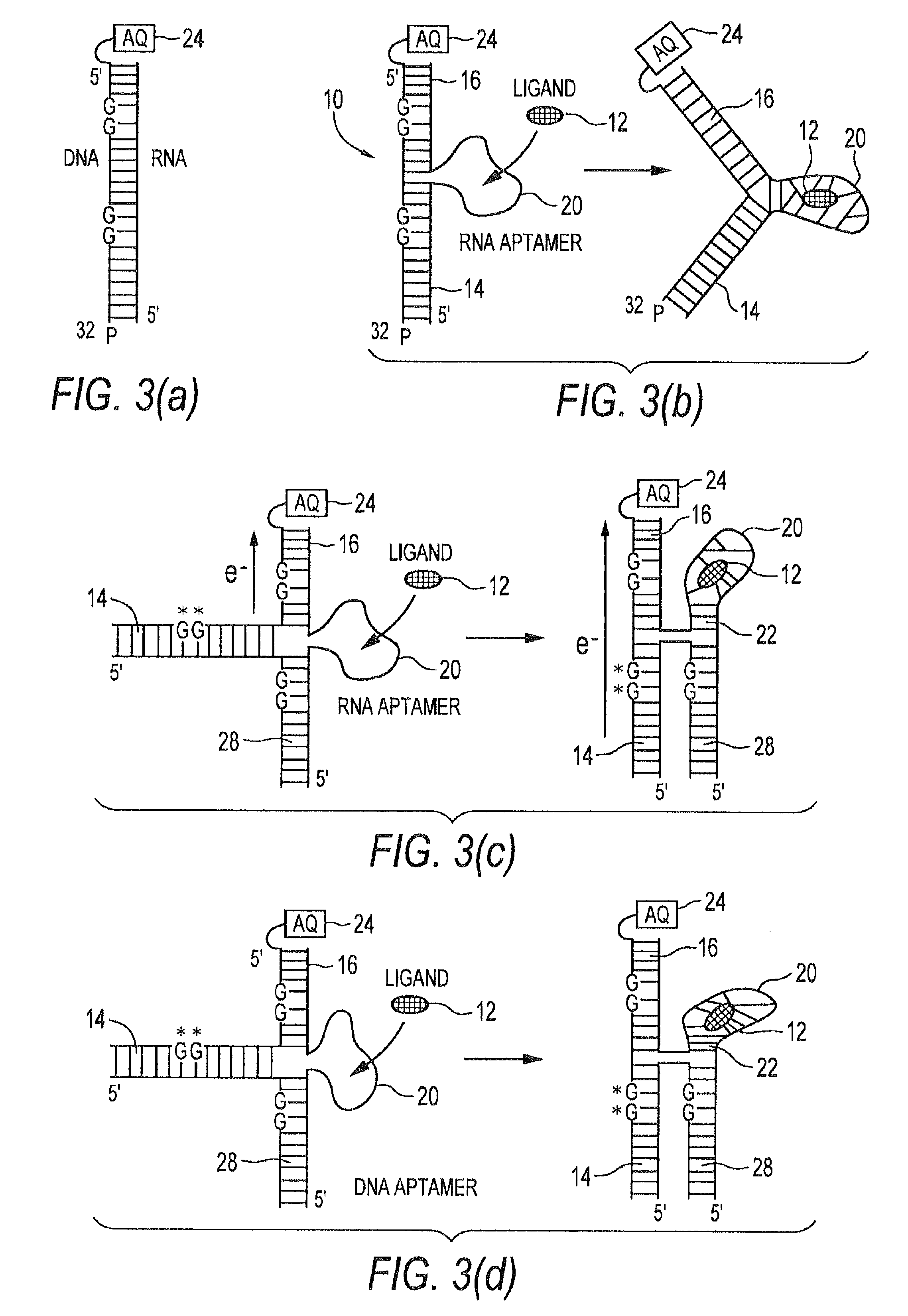DNA and RNA conformational switches as sensitive electronic sensors of analytes
a technology of conformational switches and electronic sensors, applied in the field of biosensors, can solve the problems of removal or lessening of base pairing disruption, and achieve the effect of increasing charge transfer and reducing the disruption of base pairing
- Summary
- Abstract
- Description
- Claims
- Application Information
AI Technical Summary
Benefits of technology
Problems solved by technology
Method used
Image
Examples
examples
2.1 Example Synopsis
[0104]FIGS. 12-16 illustrate an illustrative embodiment of the invention for detecting the presence of the analyte adenosine, which binds poorly, if at all, to double-stranded DNA but for which a high-affinity (Kd˜μM) DNA aptamer sequence has been derived28. NMR studies have confirmed that this aptamer, upon binding two molecules of adenosine, shows a typical adaptive folding, forming a tightly hydrogen-bonded and stacked helical structure29. Accordingly, in this example, analyte 12 is adenosine and receptor 20 is the adenosine aptamer sequence. Antraquinone is used as a charge flow inducer 24, namely a photoexcitable moiety covalently coupled to second stem 16 for controllably inducing charge transfer.
2.2 Materials and Methods
2.2.1 DNA Preparation.
[0105]Umnodified DNA sequences were purchased from Sigma-Genosys and purified by PAGE before use. Sequences to be 32P-end-labeled were pre-treated with 10% piperidine (90° C. for 30 minutes followed by lyophilization) ...
PUM
 Login to View More
Login to View More Abstract
Description
Claims
Application Information
 Login to View More
Login to View More - R&D
- Intellectual Property
- Life Sciences
- Materials
- Tech Scout
- Unparalleled Data Quality
- Higher Quality Content
- 60% Fewer Hallucinations
Browse by: Latest US Patents, China's latest patents, Technical Efficacy Thesaurus, Application Domain, Technology Topic, Popular Technical Reports.
© 2025 PatSnap. All rights reserved.Legal|Privacy policy|Modern Slavery Act Transparency Statement|Sitemap|About US| Contact US: help@patsnap.com



